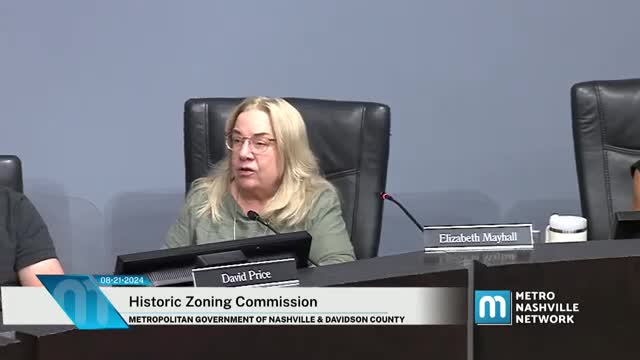Developer faces backlash over controversial demolition miscommunication
August 21, 2024 | Historic Zoning Commission Meetings, Nashville, Davidson County, Tennessee
This article was created by AI summarizing key points discussed. AI makes mistakes, so for full details and context, please refer to the video of the full meeting. Please report any errors so we can fix them. Report an error »

In a recent government meeting, developers faced scrutiny over the demolition of a historic home that has raised concerns among local officials and community members. The discussion centered on the timeline and processes involved in the demolition, which was reportedly conducted in multiple phases over several months.
A representative from the development team explained that the project involved five units, with the demolition beginning with internal work that revealed asbestos, necessitating abatement. This initial phase was followed by exterior demolition and roofing work, during which significant issues such as termite damage and wood rot were discovered. The representative emphasized that the demolition was not a single event but rather a staged process, complicated by the need for elevation adjustments and communication challenges with contractors.
A key point of contention arose regarding the lack of a building permit for the demolition. While the developer claimed that the scope of the historic renovation was permitted, it was acknowledged that the contractor had proceeded with demolition without proper authorization, leading to a miscommunication that resulted in more extensive demolition than intended.
Local officials expressed their frustration over the situation, highlighting the ongoing challenges they face in ensuring that such incidents do not recur. The meeting underscored the importance of clear communication and adherence to regulations in development projects, particularly those involving historic properties. The developers indicated that they had reached out to the Metro Historical Commission regarding necessary changes during the project, but the incident has raised questions about oversight and accountability in the construction process.
A representative from the development team explained that the project involved five units, with the demolition beginning with internal work that revealed asbestos, necessitating abatement. This initial phase was followed by exterior demolition and roofing work, during which significant issues such as termite damage and wood rot were discovered. The representative emphasized that the demolition was not a single event but rather a staged process, complicated by the need for elevation adjustments and communication challenges with contractors.
A key point of contention arose regarding the lack of a building permit for the demolition. While the developer claimed that the scope of the historic renovation was permitted, it was acknowledged that the contractor had proceeded with demolition without proper authorization, leading to a miscommunication that resulted in more extensive demolition than intended.
Local officials expressed their frustration over the situation, highlighting the ongoing challenges they face in ensuring that such incidents do not recur. The meeting underscored the importance of clear communication and adherence to regulations in development projects, particularly those involving historic properties. The developers indicated that they had reached out to the Metro Historical Commission regarding necessary changes during the project, but the incident has raised questions about oversight and accountability in the construction process.
View full meeting
This article is based on a recent meeting—watch the full video and explore the complete transcript for deeper insights into the discussion.
View full meeting
